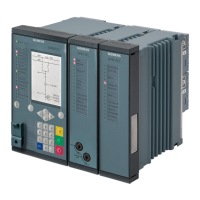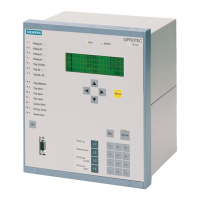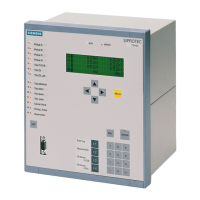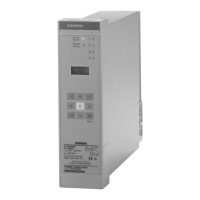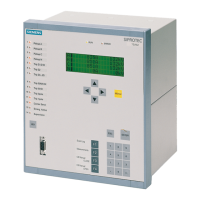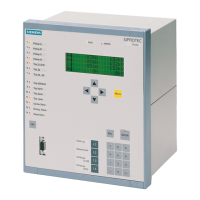Functions
2.11 Thermal Overload Protection (ANSI 49)
SIPROTEC, 7UM62, Manual
C53000-G1176-C149-7, Release date 03.2010
82
Coolant Temperature (Ambient Temperature)
With 7UM62, the thermal model considers an external temperature value. Depending on the application, this
temperature can be the coolant or ambient temperature or, in the case of gas turbines, the entry temperature
of the cold gas.
The temperature to be considered can be input in one of the following ways:
• Via measuring transducer (TD 2)
• via Profibus DP interface/Modbus
• Via temperature detection unit (Thermobox, RTD 1)
An external temperature sensor measures e.g. the coolant temperature and converts it to a temperature-pro-
portional current or voltage. This output quantity can be fed into the 7UM62 via the integrated measuring
transducer TD 2. If a signal level between 4 mA and 20 mA is used, the measuring circuit for temperature input
can additionally be monitored for interruptions. If the measured current of the external amplifier drops below 2
mA, the relay outputs a disturbance indication, and switches at the same time to a fictional coolant temperature
of 40 °C (the temperature assumed if there is no coolant temperature detection).
The ambient or coolant temperature can also be detected by an external temperature sensor, digitized and fed
to the 7UM62 via the Profibus-DP Interface / Modbus .
If a temperature supervision feature is implemented using a thermobox (see Section 2.46) the RTD1 input can
be used for temperature inclusion in the overload protection.
With coolant temperature detection in accordance with one of the three methods described, the maximum per-
missible current I
max
is influenced by the temperature difference of the coolant. If the ambient or coolant tem-
perature is lower, the machine can support a higher current than when the temperatures are high.
Current Limiting
In order to prevent overload protection on occurrence of high short-circuit currents (and with small time con-
stants) from causing extremely short trip times and thereby perhaps affecting the time grading of the short-
circuit protection, it is possible to implement current limiting for the overload protection. Currents exceeding the
value specified at parameter 1615 I MAX THERM. are limited to this value and thus do they do not further
reduce trip time in the thermal memory.
Standstill Time Constant
The above differential equation assumes a constant cooling that is reflected by the time constant τ = R
th
· C
th
(thermal resistance and thermal capacitance). In a self-ventilated machine, however, the thermal time constant
at standstill can differ considerably from the time constant of a continually running machine, since then the ven-
tilation provides for cooling whereas at standstill only natural convection takes place.
Therefore, two time constants must be considered for the setting in such cases.
In this context, machine standstill is detected when the current undershoots the threshold value BkrClosed
I MIN (see margin heading "Current Flow Monitoring" in Subsection 2.5).
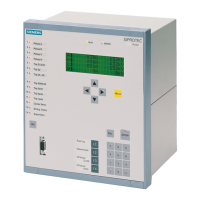
